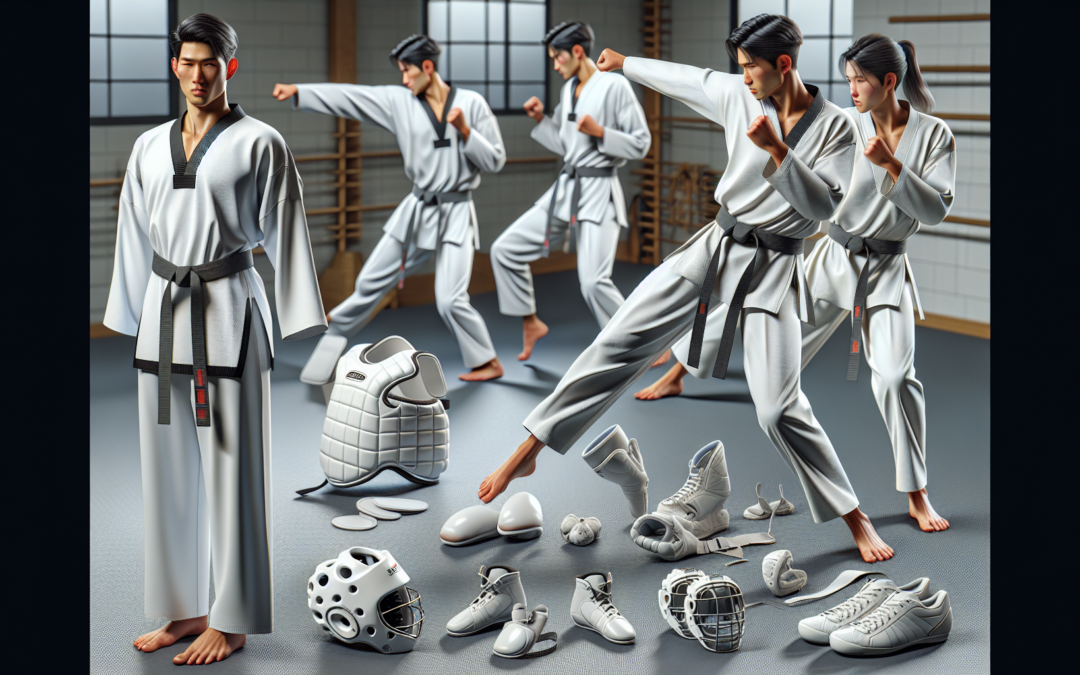“`html
In the dynamic world of Taekwondo, where power and precision blend seamlessly, donning the beloved dobok also means facing the possibility of common Taekwondo injuries. As enthusiasts and athletes pour their passion and sweat into mastering this martial art, understanding how to prevent injuries becomes paramount. The thrill of executing a perfect roundhouse kick or breaking wood with a single strike is incomparable, but without the right prevention tips, these feats can come with unwanted setbacks. At Taekwondo Academy, we’re committed to equipping you with the knowledge to dodge these challenges, ensuring you train confidently and effectively. Allow us to illuminate the path to a safer, more rewarding Taekwondo journey, where performance shines and injuries are minimized.
Mastering Safety: A Deep Dive into Common Taekwondo Injuries and Their Prevention
Embracing the discipline and spirit of Taekwondo opens up a world of agility, strength, and coordination. However, with its dynamic kicks, intricate footwork, and fast-paced sparring, this martial art also harbors the risk of injuries. For practitioners in Cherry Hill, New Jersey looking to maximize their performance while minimizing downtime, a foundational understanding of both common Taekwondo injuries and intelligent prevention strategies is essential. At Taekwondo Academy, we’re passionate about guiding you on a safer journey in your martial arts training.
Understanding Common Taekwondo Injuries
Sprains and Strains
The intensity of Taekwondo often results in the overextension or tearing of muscles and ligaments, predominantly in the legs and knees. This can be attributed to high-impact moves and quick directional changes.
Fractures and Dislocations
Another prevalent risk, particularly for beginners or those pushing their limits, includes fractures or dislocated joints. Jumps into spinning kicks and board breaks tend to be the usual suspects.
Bruises and Contusions
Given the sport’s inherent contact nature, students regularly experience bruising. While these may seem minor, repeated impacts can lead to more severe muscular or skin damage without proper care.
Concussions
Head contact is not uncommon in Taekwondo, especially during sparring. While headgear provides a degree of protection, practitioners must remain vigilant to avoid debilitating concussions.
Proactive Prevention Tips
Proper Gear and Equipment
Safety starts with the right gear. Invest in a quality mouthguard, headgear, chest protectors, and pads. These defensive measures are not only about compliance but ensuring your longevity in training.
Warm-Up and Stretching Routines
Never underestimate the importance of a thorough warm-up. Engage in dynamic stretching and cardiovascular exercises to increase blood flow and prepare muscles for intense workouts. Properly stretched muscles are flexible muscles, less likely to incur injury.
Mastering Technique and Balance
Focusing on sound technique reduces injury risk significantly. Pay attention to your balance and foot positioning, both crucial in executing powerful kicks and maneuvers accurately.
Gradual Progression and Rest
Gradual progression is the bridge to enduring strength and skill without injury. Avoid the temptation to rush into advanced techniques prematurely. Remember, recovery days are as important as training days—they allow your muscles to repair and grow stronger.
Sparring with Caution
Sparring should be approached strategically. Prioritize controlled movements and exhibit respect for your partners’ boundaries. Practicing with intent enhances your reflexes and minimizes unexpected injuries.
Cultivating a Mental Edge for Injury Prevention
Maintaining a proactive mindset is just as pivotal. To consistently refine your mental approach to injury prevention:
- Engage with Mindfulness Practices: Techniques such as meditation can sharpen your self-awareness during training, helping you tune into your body’s signals and respond to pain checkpoints.
- Visualize Successful Techniques: Regularly visualize executing difficult maneuvers safely to build muscle memory and reduce error-prone “first tries.”
- Adopt a Growth-Oriented Attitude: Instead of being frustrated by slower progress, focus on incremental improvements. Recognizing that countless tiny steps lead to giant leaps builds both resilience and consistency.

Connect and Learn More
By investing time and effort into these prevention strategies, you position yourself for enduring success and enjoyment in Taekwondo. For those eager to deepen their training further:
- Join Our Community on Social Media: Stay connected with Taekwondo Academy on Facebook for regular updates, insights, and inspiration.
- Follow Our Martial Journey: Explore behind-the-scenes content, motivation, and techniques by following us on Instagram.
Momentarily triumphing over personal obstacles in the dojo equips students with life lessons that transcend the sport. As you incorporate these preventative insights, remember: Taekwondo is not just a martial art—it’s a voyage of self-mastery and community spirit. Let’s embark on this together, refining not only our skills but our commitment to staying safe, skilled, and proudly rooted here in Cherry Hill.
“`

